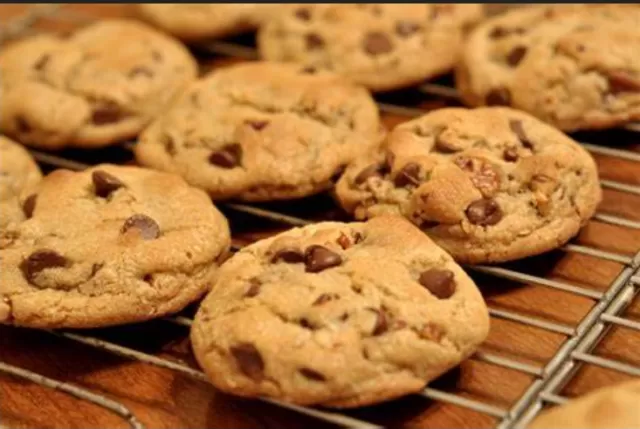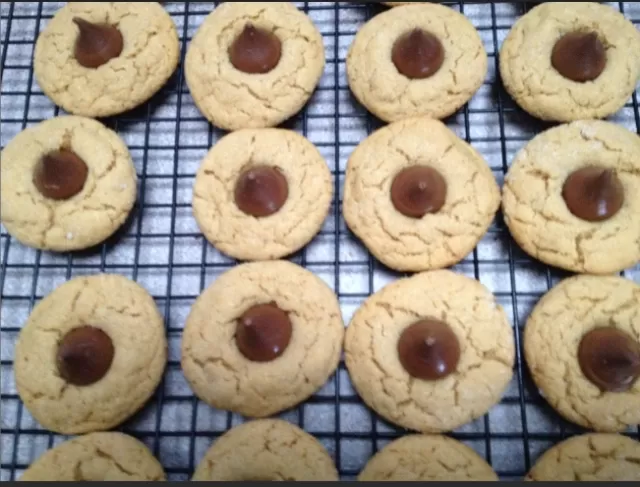Types of Cookies Everyone Should Master.In the enchanting realm of cookies, personal preferences abound, and everyone has their cherished favorites. The classic allure of warm, freshly baked chocolate chip cookies holds a special place in the hearts of many, evoking a comforting sense of nostalgia. Yet, the world of cookies is diverse, catering to varied tastes—some are drawn to the chewy allure of oatmeal raisin delights, while others swear by the crumbly perfection of buttery shortbread.
Irrespective of your cookie inclination, mastering a few fundamental recipes is essential, ensuring you’re ready to whip up a delightful treat whenever the occasion (or a sudden craving) beckons for a delectable dessert.
Amid the myriad cookie recipes available, we present 23 types that are worthy additions to your baking repertoire—each offering a unique texture and flavor profile. From the simplicity of dropping dough onto a baking sheet to the intricate artistry of crafting macarons, these recipes cater to all skill levels. Some require minimal effort for a quick, satisfying indulgence, while others demand time, patience, and a bit of practice to perfect.
Having these recipes at your fingertips proves invaluable for spontaneous sweet cravings or when you want to embark on a delightful baking adventure. Whether you’re a seasoned baker or a novice in the kitchen, experimenting with these cookie varieties adds a flavorful dimension to your culinary journey. So, keep these recipes close, and let the aroma of freshly baked cookies fill your kitchen whenever the mood strikes for a homemade treat.
The Crucial Step of Blind Baking: Elevating Your Pastry Perfection

Stefanie Bishop, esteemed chef instructor of baking and pastry arts at Auguste Escoffier School of Culinary Arts, emphasizes the significance of pre-baking the crust, commonly known as blind baking.
This meticulous process ensures that the pastry achieves a delightful golden crispiness. Bishop explains, “Blind baking is the key to fully baking the pastry, ensuring it reaches that perfect golden hue and maintains a satisfying crunch.
” Neglecting this step and filling an unbaked crust with pumpkin custard can lead to the dreaded “soggy bottom” phenomenon, where the pie’s base becomes unpleasantly moist. Moreover, the pastry risks being underbaked, even if the custard attains perfection, tempting one to extend the baking time and inadvertently ending up with an overbaked dessert.
Join us as we unravel the art of blind baking, a pivotal technique in crafting flawlessly baked pies.
Choosing the Right Vessel: The Impact of Pie Plate Selection on Your Baking Journey
Stefanie Bishop, the insightful chef instructor of baking and pastry arts at Auguste Escoffier School of Culinary Arts, underscores the pivotal role that the type of pie plate plays in the baking process.
According to Bishop, the choice of pie plate significantly influences how the pie cooks, necessitating careful consideration. For instance, she notes that glass and ceramic plates exhibit distinct heating characteristics—they take longer to heat up but retain heat for a more extended period compared to other pans. This dynamic translates into a slower initial baking phase, followed by a prolonged period of baking and slower cooling once removed from the oven.
To navigate these nuances, Bishop offers a strategic approach.
She advises placing the pie in the lower third of the oven, closer to the heat source, and initiating the baking process at a higher temperature. This technique compensates for the slower start and allows for a more balanced baking experience.
As the pie progresses, lowering the temperature ensures a thorough and controlled finish, promising a delectable outcome. Join us in unraveling the intricacies of pie plate selection and the art of temperature modulation for a baking journey that balances precision and perfection.
Navigating the Dairy Maze: The Impact of Milk Choice on Your Pumpkin Pie

In the realm of pumpkin pie perfection, the type of milk chosen is a crucial element, as highlighted by Isamar Leal, a skilled recipe developer and chef creative director at Florida Education Institute.
While various pumpkin pie recipes advocate for different dairy options, such as evaporated milk, sweetened condensed milk, or a blend of heavy cream and milk, Leal emphasizes that these dairy products are not interchangeable. Each variant carries distinct sweetness levels and textures, contributing to the overall composition of the pie.
Leal elaborates on the nuances, pointing out that evaporated milk brings an unsweetened quality with a thinner, creamier texture, in contrast to the sweetened and denser consistency of condensed milk.
Regular dairy milk, on the other hand, offers a thinner profile and lacks the richness found in evaporated milk.
It’s not a mere matter of dairy substitution; it’s a delicate balance of sweetness, texture, and richness.
Leal cautions against deviating from the specified milk in a pumpkin pie recipe, as doing so may adversely affect the pie’s texture and flavor, potentially preventing it from setting properly or, in extreme cases, rendering it inedible. As we embark on the pumpkin pie-making journey, let’s delve into the intricate dance of milk choices, ensuring that each pie emerges as a harmonious symphony of flavors and textures.
The Essence of Freshness: Beware of Aging Spices in Your Autumn Baking
As the fall baking season commences, home cooks often dust off their spice jars, only to discover that the once vibrant and fragrant contents were purchased several years ago.
The use of aging spices, a common oversight, can significantly impact the outcome of pies, particularly pumpkin pies. While these seasoned remnants may be safe for consumption, their diminishing aroma and flavor make them a suboptimal choice for creating a truly delectable dessert.
Spices, with their potency and fragrance, play a pivotal role in elevating the taste profile of pies.
However, over time, these culinary gems tend to lose their luster. Incorporating aged spices into your baking endeavors risks compromising the intended depth of flavor and aromatic richness.
In the spirit of culinary excellence, it’s recommended to opt for fresh spices when crafting pies, ensuring that each bite is infused with the full-bodied essence that only recently acquired spices can provide.
Join us in exploring the aromatic journey of fall baking, where the quest for perfection begins with the selection of spices that promise not just safety but an explosion of delightful flavors.
Navigating the Pumpkin Aisle: Differentiating Between Puree and Pie Filling

In the realm of pumpkin-centric recipes, a common pitfall is inadvertently substituting pumpkin pie filling for pumpkin puree.
Although these canned products may appear similar on the grocery store shelf and are easily mistaken for one another, they hold distinct characteristics and ingredients. Isamar Leal, a knowledgeable culinary expert, sheds light on the crucial differences, emphasizing that while pumpkin puree consists of cooked, pureed pumpkin, pumpkin pie filling is a pre-sweetened and spiced blend meticulously crafted for pie-making.
Leal cautions against the inadvertent swap, explaining that opting for pumpkin pie filling in lieu of puree can result in a dish that is excessively sweet and potentially features an undesirable medley of spices.
To maintain control over the sweetness and spice levels in your recipe, she advocates for the use of pumpkin puree, whether store-bought or homemade. Join us in unraveling the nuances of pumpkin selection, ensuring that each creation bears the hallmark of your culinary intention, be it a perfectly spiced pie or another pumpkin-infused delight.
*The information is for reference only.